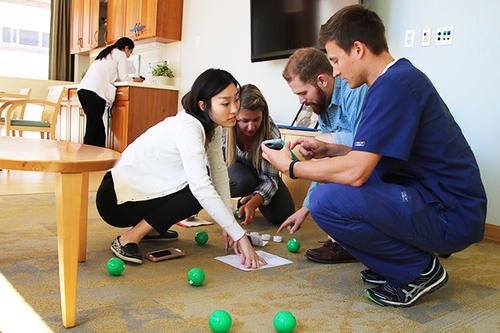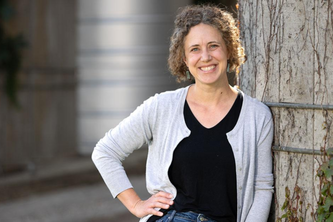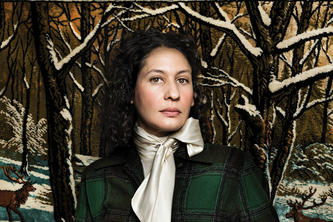
When the 1Health interprofessional education team at the U of M first visited an escape room three years ago, Cheri Friedrich had no idea it would eventually unlock a new realm of interprofessional education for University of Minnesota students—or steer her career in an unexpected direction.
Friedrich, a clinical associate professor in the U of M’s School of Nursing, attended that escape room with the team and had a blast, she says. “We thought, maybe we could make this interprofessional-healthcare related, build a healthcare scenario, and have puzzles related to health care that build interprofessional communications skills.”
Friedrich signed on to be the lead faculty developer, and with the help of three interns created a pilot escape room in the spring of 2016.
From there, the concept has exploded. There is a beginner escape room and an advanced escape room, and both are now components in U of M course curricula. The development team created an escape room guidebook available online that’s had 375 downloads from practitioners in 40 states and 9 countries. Apparently, there’s no escaping a good idea.
Friedrich says that the beginner escape room may have students from six healthcare professions: dental hygiene, dental therapy, nursing, occupational therapy, physical therapy, and social work.
And advanced escape rooms entail more simulations and complex medical scenarios. One focuses on a virtual patient, “J.T.,” who has diabetes, ends up in the hospital with diabetic ketoacidosis, and is unable to follow his medication regime because of bipolar disorder.
Students have to decipher an array of creative and at-times baffling clues (on balls, charts, and other props) that can only be solved by using profession-specific knowledge and communicating as a group. As an outcome for “escape,” they must create a discharge plan for J.T. in an hour.
Student feedback has been incredibly positive, according to Friedrich. She says that after the pilot program, more than 90 percent of the students thought it should be a part of the curriculum.
“The variety of tasks allowed different members of each group to use their strengths in determining the solutions,” says Abbey McNamara, a nursing student who participated in a beginner escape room. “I think this experience will be very valuable as we go on to work in a healthcare field, since communication, teamwork, and problem solving are all pivotal in providing effective patient care.”
- Categories:
- Health





